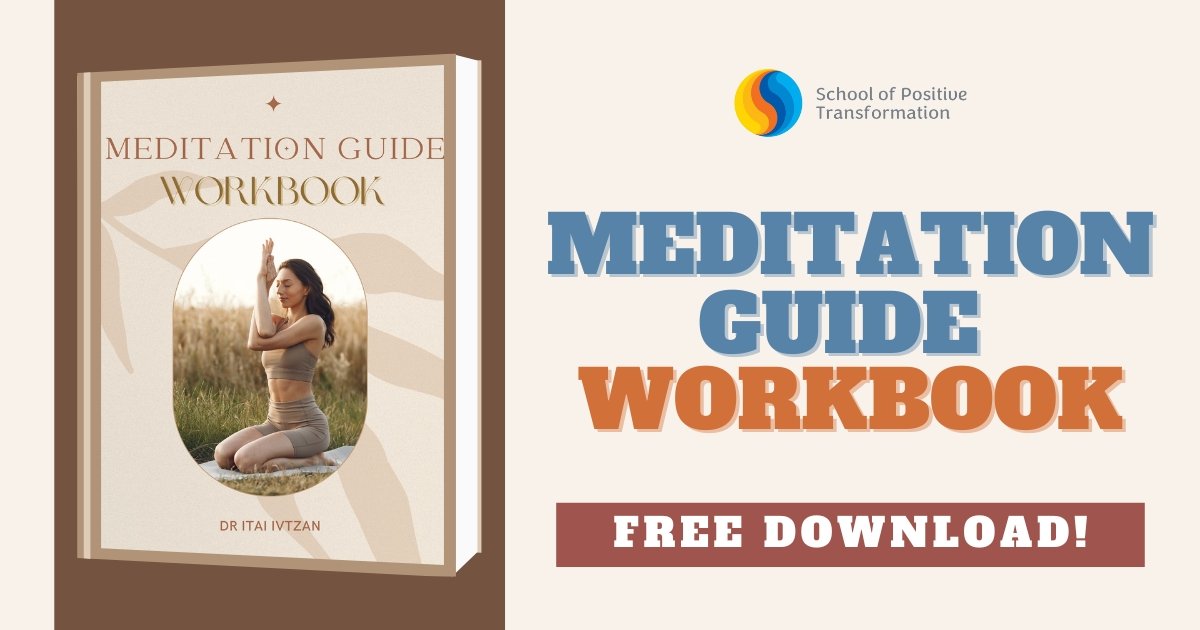A Basic Guide to Meditation
Basic guide to meditation can have extensive mental and physical benefits, and you need less than 10 minutes alone each day to do it.
Contrary to what some may say, meditation can be a very simple, noncomplicated practice. There is nothing complex about sitting in silence and letting our mind rest for a couple of minutes. If you are new to meditation, here is a quick guide to help you begin your practice.
Before you continue you might like to consider our free worksheet on exploring “Meditation Guide”. Please download this worksheet here.
Sitting Posture
While there are many different meditation postures, the most recommended is the cross-legged, lotus position, with spine straight and chin slightly dipped. If you can’t do the full lotus position, try the quarter lotus or another variation that suits you.
This posture allows us to feel the flow of energy that comes through the top of our crown and flow to the base of the spine. By lifting the body and lengthening the spine, we allow the energy to flow through the main energy centers that are lined up along our spine. It is also in this sitting position that we can feel alert and relaxed at the same time, which is why this makes an ideal posture for meditation practice.
These days we see other variations such as lying down, standing, walking, and sitting on chairs. If you think the lotus position is too difficult for your physical condition, find a posture that you are comfortable with. Be aware of how you feel and what are your intentions for practicing, from there, you will be able to find a posture that suits you.
Hand Placement
So, where are your hands supposed to go?
Again, there are no fixed rules. For starter, you may place your hands on your lap in a way that is most comfortable for you. Whichever way you place your hands and legs, I will suggest that you create a closed circuit so that energy can flow through you without disruption.
It is also common to see practitioners adopting traditional hand placements like “Mudras”. Mudra is the Sanskrit word that translates to “seal”, “mark”, or “gesture”. It is believed that our hands and fingers are connected to our energy centers, also known as “Chakras”.
The ancient practice of Mudras has been known to assist in the flow of energy for aligning our sensory receptors and creating a deep connection with your mind, body, and spirit. Each Mudra can direct our energy very differently, which also means, every different hand placement can bring different benefits and healing.
There are probably hundreds of different Mudras, but perhaps Gyan Mudra and Dhyana Mudra are two that are commonly used.
Gyan Mudra
Gyan Mudra is a powerful mudra practice that can help to increase concentration and sharpen the memory power. It also brings peace and calmness to the soul for spiritual progress.When using this Mudra, the thumb and index finger are supposed to form a “seal” (circle). Take note that your index finger and thumb should touch tip to tip, NOT tip to nail. When meditating, turn your palms facing up and place them above your knees.
Dhyana Mudra
The Dhyana Mudra is one of the most common hand placements used during meditation. This is probably because it rests easily on your legs and there is no conscious effort required to hold your fingers in place. Most practitioners do this comfortably without even realizing it.
This meditation seal is known to promote balance from within. Being balanced is one of the key purposes of meditation, which is why this mudra is so commonly used. When meditating, place the back of your right hand on the palm of your left hand, then raise the thumbs to connect them, creating a bowl or triangle.
Space and Environment
While there are no rules to where meditation can take place, finding the right spot can certainly improve the experience. Some practitioners will go to great lengths to create a “sacred place” for their daily practice. This can mean clearing out a part of your room and dedicating it as your quiet corner for meditation.
For beginners, you may start your meditation practice in a quiet and uncluttered place that ensures uninterrupted comfort. It should be a place where you can spend 15 to 30 minutes on your own without being disrupted by ringing phone calls or busy human traffic.
Taming that Monkey Mind
It is inevitable to drift into random thoughts during meditation. Do not beat yourself up because of that. This happens even to the most experienced practitioners. Remember that your thoughts are not your enemies, do not get annoyed when they show up during your meditation. The trick here is to acknowledge their existence and let them go. Once you acknowledge that they are there, then shift your attention back to your breath.
Consistency
There is no fast track to successful meditation. The only way you can derive benefits is by consistent practice. Start with short practices that last 5 to 10 minutes and increase the duration over time.
Some practitioners schedule their meditation on a specific time slot every day and at the same place. Much like cultivating a workout routine or eating habit, setting a daily meditation schedule can help to ensure consistency and longevity of the practice.
Keep on Keeping On
Basic guide to meditation is an intimate practice. It is about knowing yourself and cultivating your mind, which is why you should not feel rushed by anyone or that you are not progressing as fast as others. There is no competition in the realm of meditation, all that matters is the sense of balance and focus that you can derive from the practice. The next time you get into your meditation practice, allow yourself to go with the flow. Whether it is a tense day when you find it harder to relax into the practice or a busy day that makes it difficult to settle down, don’t judge yourself for not getting into the zone fast enough. Honor yourself even if you only take one minute to meditation, it is when you begin to appreciate your practice that you will begin the transformation from within.
If you’re ready to dive deeper into meditation and make it a consistent part of your life, don’t wait! Download our “Meditation Guide Workbook” and get started on your journey today. This workbook will help you cultivate a regular practice, understand your mind better, and unlock the benefits of mindfulness.






